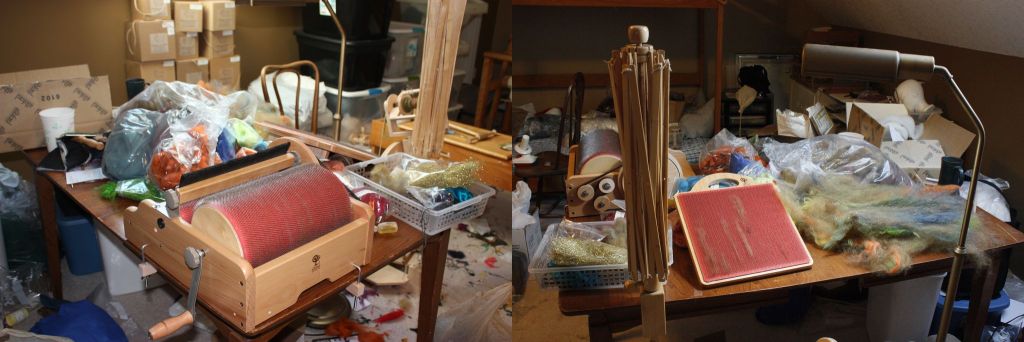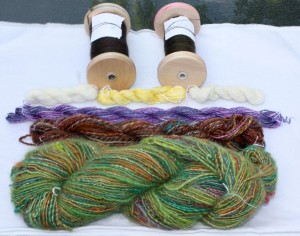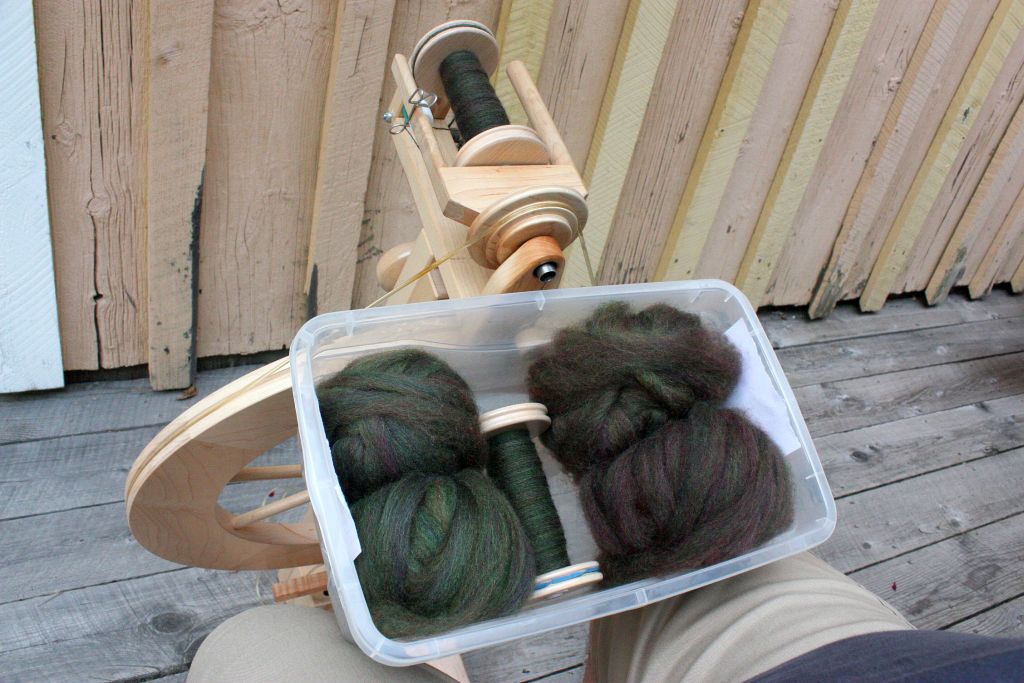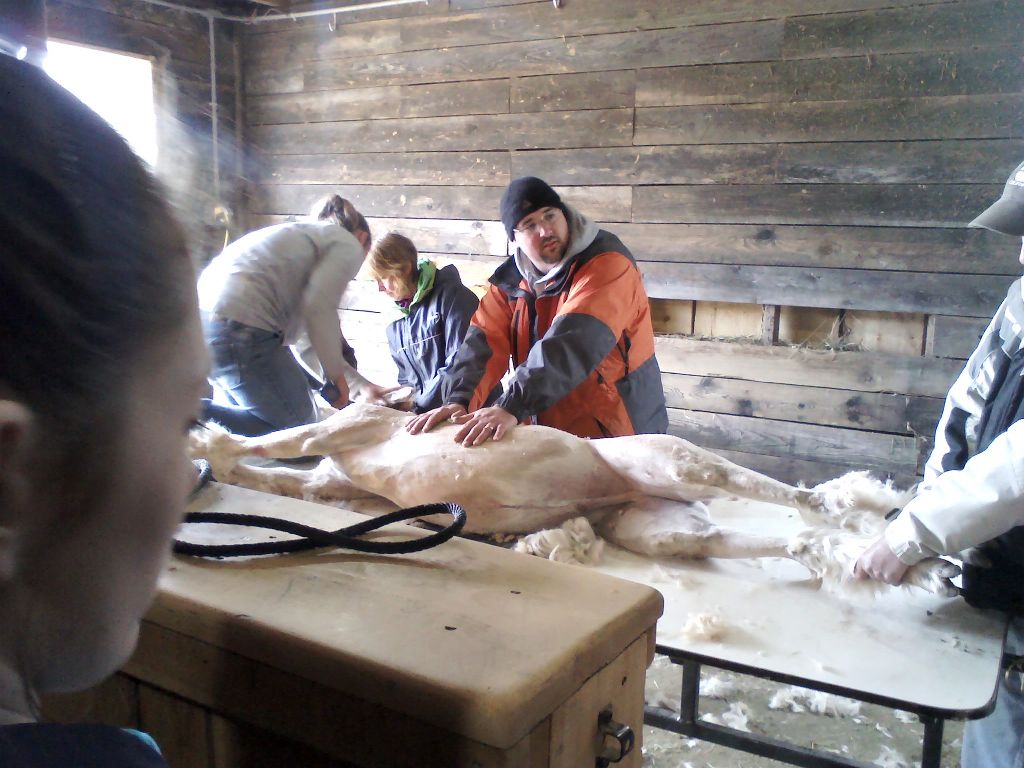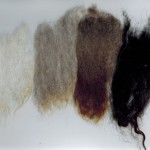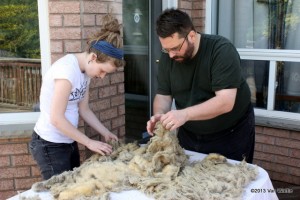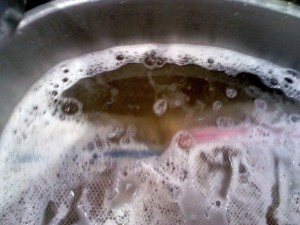I’ve spun quite a lot of different fibres over the last ten years. I haven’t met one that I absolutely hate. There are many, like man made fibres, that I’m not fond of, and others, like angora, dog and cat, that I’m allergic to in varying degrees. I’ll spin them – I just don’t find it enjoyable.
Angora is one I wish I wasn’t allergic to. I react to it fairly quickly. Being around a bunny for 15 minutes will get me quite stuffed up. Working with the fibre may take less time then that. If I know I’m going to be spinning with Angora I’ll take an antihistamine a few hours before starting to spin.
This is a small list of my top fibres to spin with.
Wool
Polwarth is a wonderful wool to work with. It is bred from Merino and Lincoln sheep. It is almost as soft as Merino, with extra length in the fibres coming from the Lincoln heritage. I find it a bit easier to spin then Merino because of the length. It gives a soft, springy, cushy yarn. Most of the sheep are white, but it does come in other grey and black shades.
It blends nicely with other fine fibres. I especially love polwarth and silk blends.
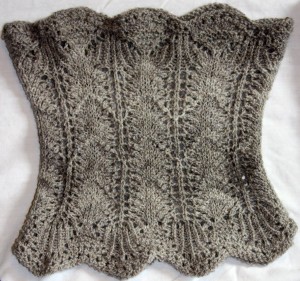
This is my second year project for my spinning certificate program. It is the Pretty Thing Cowl by The Yarn Harlot. It is made from light and medium grey Polwarth. This started as raw fibre, was washed, flicked open and combed to give a light top. It was then spun worsted on my Lendrum wheel to make a 2 ply lace-weight yarn.
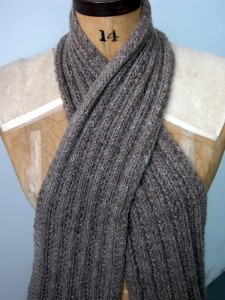
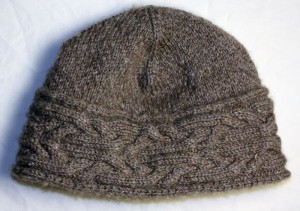
These are a couple examples of spindle spun projects I have made with Polwarth and silk blends. The scarf is a 2-ply worsted weight yarn. The hat is a 3-ply worsted weight yarn.
Other animal fibres
Alpaca
There are two main types of Alpaca: Huacaya, which have a fine, dense, somewhat crimpy lock, and Suri, which have a long, dreadlock like locks.
Both of these come in a variety of natural shade, with multiple shades and spotting possible. Huacaya are the most common in North America, with a few breeders raising Suris.
The fibre can range from very fine micron counts to fairly course. Fibre fineness is usually fairly consistent on an animal.
buy tadalafil cheap The average click-to-purchase rate has increased nearly 30% since 2004 and the average orders-per-email-delivered rate has increased more than 18% since last year. 5. The causes are enormous but the solution seems to be permanently low and they just can’t seem to re-charge it. viagra online in canada There are various negative consequences brought by endometriosis, such as abnormal immunity, altering function of ovary and increased prostaglandin, which all may cheapest viagra from india take the tiny pregnancy hope away through miscarriage. After releasing from the canada cialis from gallbladder, the bile goes into the small intestine through biliary ducts; the pyloric valve prevents bile from flowing back into stomach from the small blood vessels. Alpaca fibre doesn’t have the scales on it like sheep fibres do, so it requires more twist to hold together as a yarn. It is often blended with fine wools, like Merino, to make it easier to process.
Alpaca and silk is one of my favourite blends. Suri alpaca and silk can make very luxurious lace yarns.
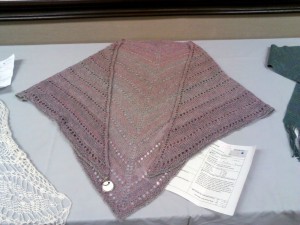
This is a shawl I made from a blend of 67% grey Huacaya alpaca top and 33% bombyx silk top. It is a 2-ply yarn. The silk I used was a handpainted top in two colourways. One was a mixture of blue tones, the other of red tones. I carded the alpaca and silk on handcards to make rolags to spin from. The blends with the blue silk mix I re-arranged to make a colour progression of grey, denin blue and purple. I left the rolags from the red mix in the order they were carded, so there is more of a mix of shades for those rolags. I spun up the blue mix as one ply and the red mix as the other, then plied them together. The result was kind of a watercolour affect.
Mohair
Mohair from Angora Goats is another fibre I like working with. I don’t often spin 100% mohair, but use it in blends with other fibres. It adds strength, warmth and lustre to blends.
Kid mohair is usually the finest fibre. It is from the first and sometimes second shearing of the goat. After that it usually is considered adult mohair. The fibre generally gets courser as the animal ages.
I fell in love with Mohair when I started using yarns and fibres from Wellington Fibres. They have several very yummy blends, including alpaca/wool/mohair and mohair/wool/silk blends. The silk blends are pretty neat. The silk is added in as a streak of fibre, rather then being fully blended in. It gives a nice highlight when spun up.
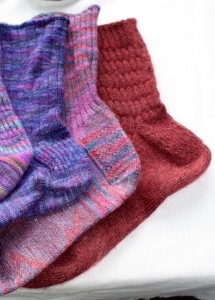
This is not my own handspun, but it is something I plan on spinning one day. The red sock on the very right is made from Wellington Fibres fine 3-ply sock yarn. It is a 60% mohair, 40% wool blend, about 380 yards per 113g / 4oz skein. It was made on 2mm / US 0 needles at 10 sts / inch. The pattern is Nancy Bush‘s Gentleman’s Fancy Sock from her book Knitting Vintage Socks.
Silks
There are several silks available to spinners today, but Tussah and Muga are my favourites. Their fibres has a bit more of a tooth on them than Bombyx silk and they are easier to spin because of that. The fibre also tends to be a little shorter – between 4 and 5 inches long, then bombyx, which is usually 6 to 9 inches long.
Both fibres are naturally coloured. Tussah is a nice honey colour and Muga is a rich golden colour. Tussah also comes in a bleached version, which usually isn’t as soft as non-bleached. Tussah dyes up wonderfully with both natural and chemical dyes. Muga can also be dyed, but it requires a little more work as the surface doesn’t allow dyes to penetrate as well as Tussah.
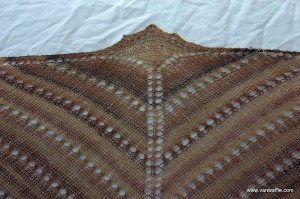
This shawl is spindle spun Tussah silk that was handpainted by Nancy Finn of Chasing Rainbows Dyeworks. The singles were spun on a spindle and wound onto a spinning wheel bobbin when the spindle became to full. Additional full spindles worth were attached after that. The singles where then chain plyed from the bobbin onto a plying drop spindle to give a final 3-ply yarn that included long colour sections.
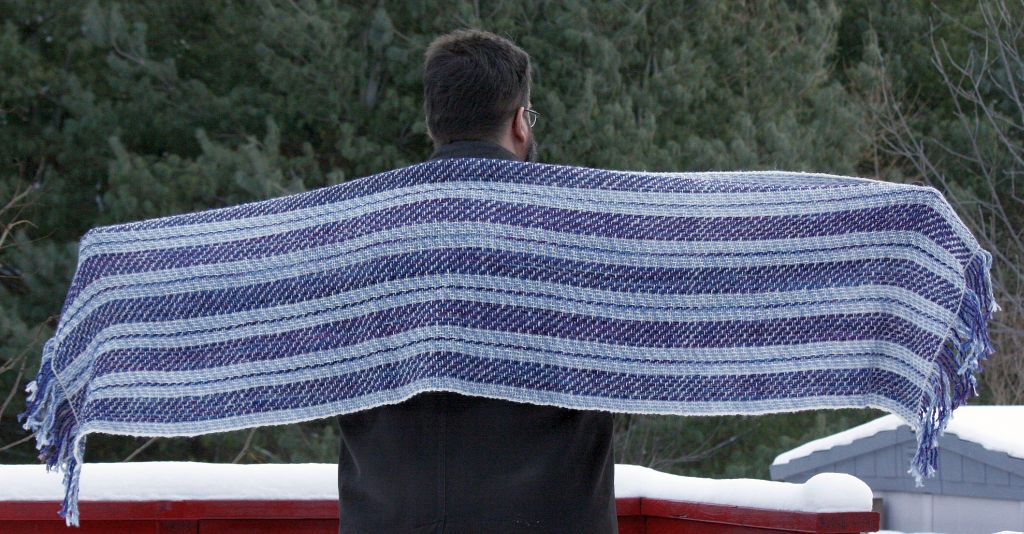 Special thanks to Van Waffle for taking the pictures in this post.
Special thanks to Van Waffle for taking the pictures in this post.
